Origins of Indian Embroidery Styles
India is truly a land of wonders with diverse traditions, customs, festivals and religions. The greatest treasure of any country is its rich art, culture, heritage and tourism. One of the richest crafts in which India has a distinct identity is the craft of Indian Embroidery.
Since India is home to 29 states and different cultures and traditions are followed all across them, inspired them has brought several embroidery techniques along with their cultural heritage. Every state and culture has its style and flavour.
Following is the list of some of the famous embroidery styles that everyone must know.
1. Chikankari/ Chikan, Lucknow, Uttar Pradesh
It is believed that Chikankari was introduced by Noor Jahan, the wife of Jahangir. It has its roots back from Lucknow, Uttar Pradesh. It was first weaved on a white cloth but today it is available in many colours and beautiful designs. Chikan Embroidery can be found on sarees, churidars, Kurtis and even palazzos. Chikankari embroidery displays elegance and class and is considered to be a personal favourite for its distinguished style statement element.
Read Also>>> Exquisite jewellery that Every Woman Should Have!
2. Zari/Zardosi, Surat, Gujarat
Zari is a skilled and artful technique of embroidery where patterns are made on fabrics like velvet, satin and heavy silk. The threads used in Zari/ Zardosi use threads in gold or silver varying from 3-D-like patterns to minimal designs and are best found in bridal wear and similar fashion couture. Zari embroidery displays luxury as it looks embellished. Zari was introduced by the Mughals in the 16th century and the Zardosi was brought in by the Persians, the name Zaridosi refers to Gold (Zari) and Embroidery (Dosi). Due to its embellished look, this displays confidence and glamour.
3. Phulkari, Punjab and Haryana
Phulkari embroidery has its roots in the rural areas of Punjab and Haryana and is inspired by the Heer Ranjha folklore. It consists of diagonal threadwork which follows a geometric pattern with bright coloured embroidered designs having no gaps. Phulkari embroidery follows a diagonal threadwork which consists of a geometric pattern with flower motifs set in together with stitching horizontal and vertical patterns.
4. Aari, Rajasthan and Lucknow
The most special feature of Aari as embroidery is the use of a hooked, sharp needle in its technique. The Mughals were the first to use this embroidery technique, which is regarded as finery embroidery that uses beads and sequins to decorate chain stitch loops. Inspired by designs of nature, Aari is one of the richest Indian embroideries which adds a beautiful style statement. Aari embroidery is maximum made on the body of the saree and having the blouse left plain. It's the ideal style statement, as it's light and comfortable while also being fashionable.
5. Kantha
Having its roots in eastern India, especially West Bengal, Odisha and Tripura Kantha embroidery is hugely practised by rural women. Kantha embroidery is done on cushions, blankets, sarees and bedspreads. Nowadays, Kantha embroidery is popularly used in dupattas for women’s clothing.
Kantha embroidery comprises lowers, animals, celestial objects, and geometric patterns. This embroidery is known to give added comfort and is widely popular in trends for ethnic wear namely kurtas and suits.
This embroidery gives a pleasant appeal and is chosen for its fresh motifs that complete the entire dressing look without much need for accessories.
Kantha suits and Kurtis can be worn on any adaptable occasion and is easy to maintain.
Read Also>>> Essentials for a Cozy Bedroom with a Themed Decor
6. Gota
Gota embroidery has its origins in Rajasthan and uses the Zari from Lucknow by making elaborate patterns and surface textures.
Gota embroidery work is originally done with gold and silver wires of varying lengths woven in satin fabric. Fabric such as georgette or bandhani is widely used whereas Gota is decorated by hemming or backstitching.
Gota embroidery gives a royal impression and is widely chosen to be worn on special occasions. Clothes that are embroidered with Gota look heavy but are surprisingly lightweight to be carried on the body. This embroidery is widely chosen by brides for its unique patterns, lightweight designs and variety of colour options. Gota embroidery is available in suits, dupattas, sarees, ghagras, and lehengas, for an ethnic look meant for celebrations.
7. Kashidakari
Kashidakari embroidery has its origin in Kashmir and is fondly known as Kashida. This embroidery was brought in by the members of the same-named extended family.
Light coloured cotton clothes are chosen for summer and dark coloured woollen clothes are chosen for winter on which the patterns are created. The process of a single stitch is used for one single design and the entire pattern is completed in a few stitches. The designs that are selected to create this beautiful embroidery are flora, from flowers to twirling vines, from leaves on branches to blossoming flowers.
Kashida embroidery is the most loved and selected by women in India, especially during winters. No one needs any specific introduction to Pashmina shawls and the Kashmiri suits representing vibrance and distinctive look.
Any woman cannot go wrong while choosing Kashmiri embroidery if paired with oxidized jewellery and jhutis.
Conclusion
Through this, you should have got all the knowledge related to Indian embroidery. Whether you choose Zardosi or Phulkari, Kashmiri, or Gota, Shisha, or Chikankari, all work well to create an exceptional fashion statement. The art of embroidery never goes out of style.






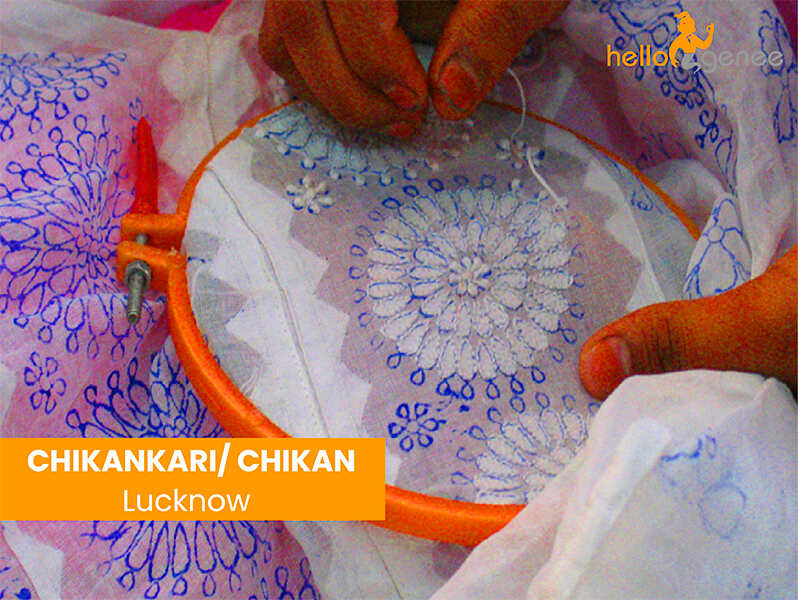
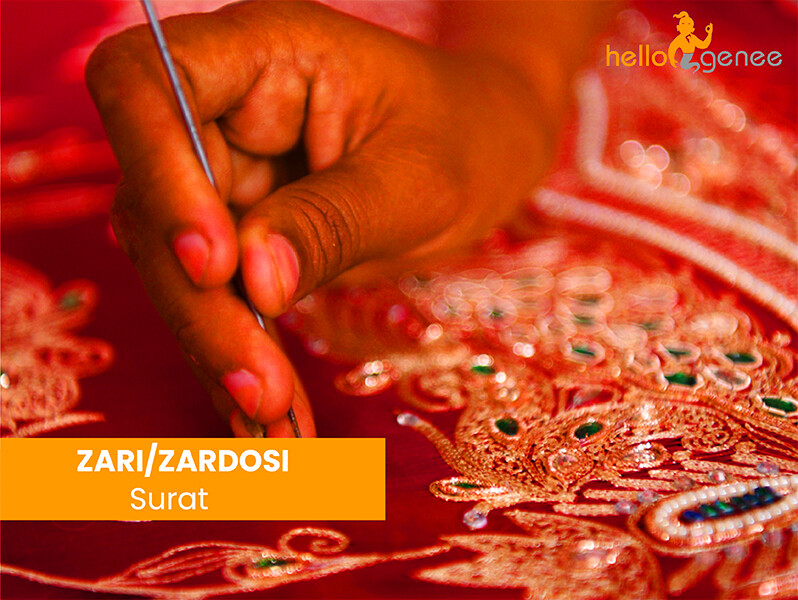
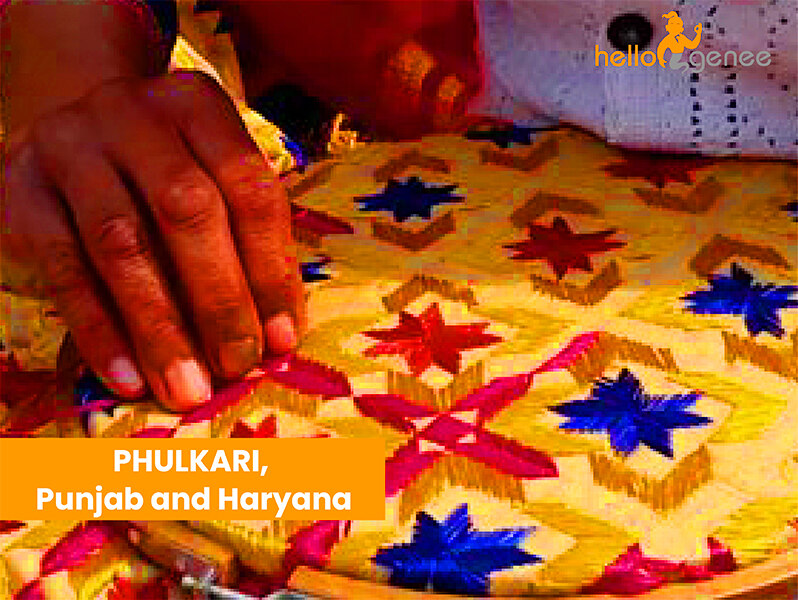
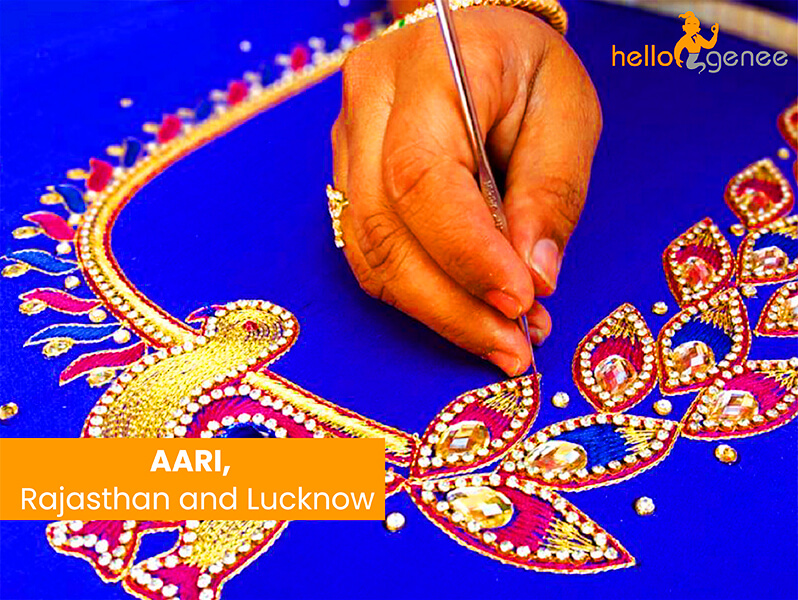
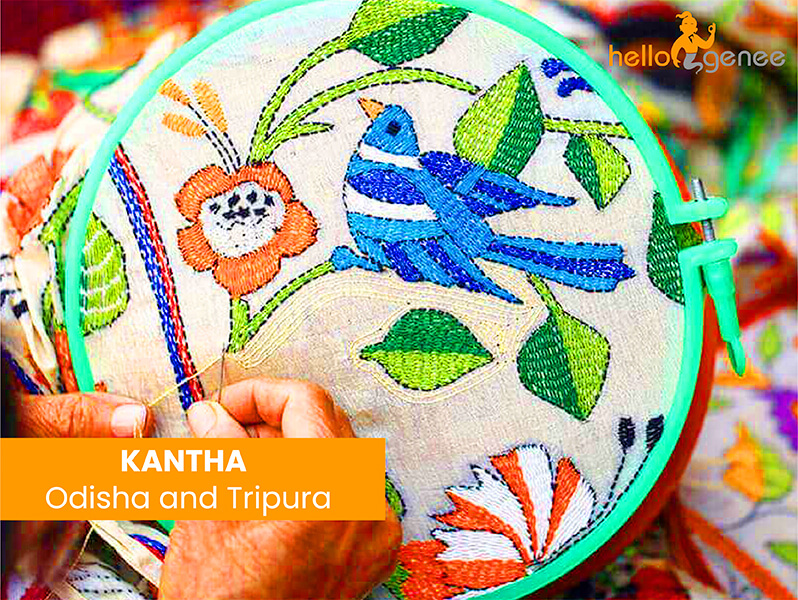
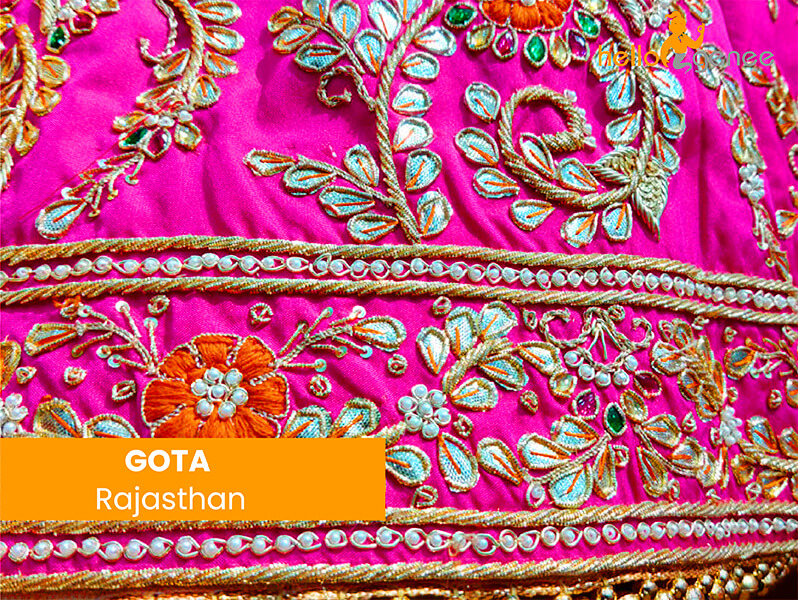
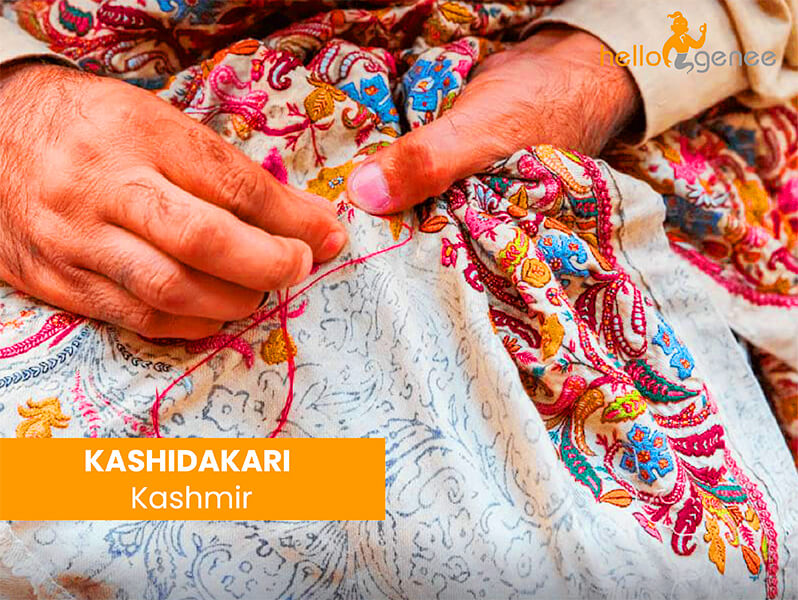






Comments